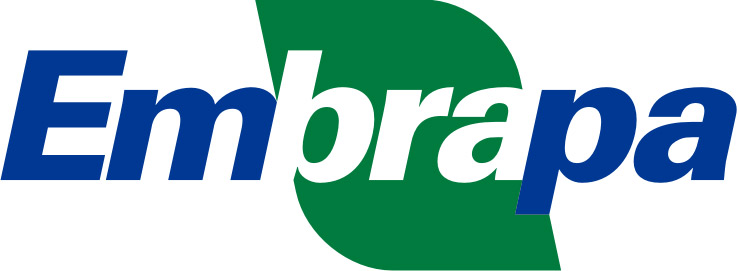Please use this identifier to cite or link to this item:
http://www.alice.cnptia.embrapa.br/alice/handle/doc/1139656Full metadata record
| DC Field | Value | Language |
|---|---|---|
| dc.contributor.author | LIMA, B. L. de C. | |
| dc.contributor.author | SILVA, Ê. F. de F. e | |
| dc.contributor.author | ZONTA, J. H. | |
| dc.contributor.author | CORDÃO TERCEIRO NETO, C. P. | |
| dc.contributor.author | LACERDA, C. F. de | |
| dc.contributor.author | FERREIRA, J. F. da S. | |
| dc.contributor.author | CRUZ, F. J. R. | |
| dc.date.accessioned | 2022-02-04T01:56:56Z | - |
| dc.date.available | 2022-02-04T01:56:56Z | - |
| dc.date.created | 2022-02-03 | |
| dc.date.issued | 2021 | |
| dc.identifier.citation | Agronomy, v. 11, 2370, p. 1-16, 2021. | |
| dc.identifier.issn | 2073-4395 | |
| dc.identifier.uri | http://www.alice.cnptia.embrapa.br/alice/handle/doc/1139656 | - |
| dc.description | Treated domestic sewage (TDS) can contribute to plant nutrition and improve crop production. However, there are no data for its use in coloured cotton under a deficit or excess irrigation in combination with potassium fertilization rates (KRs), mainly under semiarid tropical conditions. The research was conducted using a randomized complete block design in a factorial scheme (5 × 5, irrigation regimes vs. potassium rates), plus an additional treatment as the control ((5 × 5) + 1). The treatments consisted of five TDS irrigation regimes (50, 75, 100, 125, and 150% of crop evapotranspiration?ETc) and five KRs (0, 50, 100, 150, and 200% of the local crop recommendation), plus a control?CT? (irrigated with fresh water at 100% ETc and fertilized according to the local crop recommendation) and four replications. The optimal crop yield, water use efficiency, and potassium use efficiency were obtained when TDS was applied as a deficit irrigation treatment of 75% of ETc or as full irrigation (100% of ETc) and when associated with moderate increases in K fertilization. These treatments also resulted in a better fibre quality when compared to the CT, meeting or exceeding the requirements of the textile industry. Therefore, moderate deficit irrigation with TDS is indicated as an important strategy to save fresh water and to reduce the use of fertilizers, while having the potential to increase profit margins for cotton production in tropical semiarid regions. | |
| dc.language.iso | eng | |
| dc.rights | openAccess | |
| dc.subject | Gossypium hirsutum L | |
| dc.title | Irrigation with wastewater and K fertilization ensure the yield and quality of coloured cotton in a semiarid climate. | |
| dc.type | Artigo de periódico | |
| dc.subject.thesagro | Indústria Têxtil | |
| dc.subject.thesagro | Algodão | |
| dc.subject.nalthesaurus | Textile industry | |
| dc.subject.nalthesaurus | Available water capacity | |
| dc.subject.nalthesaurus | Cotton | |
| dc.format.extent2 | 16 p. | |
| riaa.ainfo.id | 1139656 | |
| riaa.ainfo.lastupdate | 2022-02-03 | |
| dc.identifier.doi | 10.3390/agronomy11122370 | |
| dc.contributor.institution | BRENO LEONAN DE CARVALHO LIMA, INSTITUTO NACIONAL DO SEMIÁRIDO - CAMPINA GRANDE - PB | |
| dc.contributor.institution | ÊNIO FARIAS DE FRANÇA E SILVA, UNIVERSIDADE FEDERAL RURAL DE PERNAMBUCO | eng |
| dc.contributor.institution | JOÃO HENRIQUE ZONTA, CNPA | eng |
| dc.contributor.institution | CÍCERO PEREIRA CORDÃO TERCEIRO NETO, EMPRESA PARAIBANA DE PESQUISA, EXTENSÃO RURAL E REGULARIZAÇÃO FUNDIÁRIA - EMPAER | eng |
| dc.contributor.institution | CLAUDIVAN FEITOSA DE LACERDA, UNIVERSIDADE FEDERAL DO CEARÁ | eng |
| dc.contributor.institution | JORGE FREIRE DA SILVA FERREIRA, AGRICULTURAL RESEARCH SERVICE - USDA | eng |
| dc.contributor.institution | FLÁVIO JOSÉ RODRIGUES CRUZ, INSTITUTO FEDERAL DE EDUCAÇÃO, CIÊNCIA E TECNOLOGIA - AMAPÁ. | eng |
| Appears in Collections: | Artigo em periódico indexado (CNPA)  | |
Files in This Item:
| File | Description | Size | Format | |
|---|---|---|---|---|
| IRRIGATION-WITH-WASTEWATER-AND-K-FERTILIZATION-.pdf | 4,68 MB | Adobe PDF |  View/Open |









